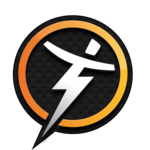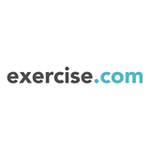What Is Personal Training Software?
Personal Training Software is a useful tool for fitness experts and individuals who want to track and improve their workouts and general health. This program is intended to streamline activities, improve communication, and give an effective way to track client progress, making it an important investment for both trainers and fitness aficionados. Personal Training Software is a digital platform that enables trainers to build and maintain personalized fitness routines for their clients.
Trainers can enter workouts, track progress, and make changes to plans using an easy-to-use interface. This eliminates the need for paper-based exercise logs, which are easily misplaced or damaged. Personal Training Software also includes features like progress tracking, scheduling, and communication tools to help trainers and clients communicate more seamlessly and effectively.
This enables trainers to monitor their clients' progress and make appropriate adjustments for optimal results. One of the primary advantages of Personal Training Software is the flexibility to use it from anywhere and at any time. Trainers may develop and modify training routines on the road, while customers can effortlessly check in and track their progress with a smartphone or computer.
This convenience makes it an excellent alternative for busy people who want to prioritize their fitness without disrupting their regular routine. Furthermore, Personal Training Software frequently connects with wearable fitness trackers, allowing for precise monitoring of workouts and progress. This function not only pushes clients to achieve their goals, but it also offers trainers with useful information for developing efficient workout routines.
When choosing Personal Training Software, check for features like customization, progress monitoring, scheduling, and interaction with fitness trackers. Furthermore, both trainers and clients should find the software's design to be intuitive and easy to use.
What Are The Recent Trends In Personal Training Software?
The demand for personal training software has increased significantly in recent years, as more people seek convenient and effective solutions to achieve their fitness goals. This has resulted in a boom of invention and growth in the sector, as well as some intriguing developments in personal training software.
Here are some recent trends to consider while selecting the proper personal training software for your needs:
1. Mobile Applications: With the increased usage of smartphones, several personal training software businesses are now providing mobile applications that allow customers to access their programs while on the go. This allows trainers to deliver individualized workouts, track progress, and connect with clients in real time, making training more comfortable and adaptable.
2. Integration With Wearable Technology: Another current trend in personal training software is the incorporation of wearable technology such as fitness trackers, smartwatches, and heart rate monitors. This enables trainers to more properly track their clients' activity levels and development, offering significant data for tailoring training strategies.
3. Artificial Intelligence: The use of artificial intelligence (AI) has become common in personal training software. AI-powered solutions may evaluate data and make individualized training recommendations, streamlining the process and increasing effectiveness. Some software even supports virtual coaching, in which AI serves as a virtual personal trainer, offering 24/7 advice and assistance.
4. Gamification: To make workouts more engaging and enjoyable, many personal training software providers are introducing gamification components into their programs. This includes establishing challenges, earning rewards, and competing with friends or other users to make exercise feel more like a game than an obligation.
5. Customization And Personalization: In today's fitness environment, one size does not suit everyone. That is why many personal training software firms are now offering customisable and personalized programs to meet the specific needs and goals of individual clients. This involves establishing personalized workout routines, tracking progress, and tweaking the program as needed to get the best outcomes.
Benefits Of Using Personal Training Software
Personal training software is an invaluable resource for both fitness amateurs and experts, offering several benefits to users. There are numerous benefits to implementing personal training software into your fitness routine or business, including work efficiency and increased customer involvement.
let's explore, we'll look at the primary benefits of utilizing personal training software to help you make an informed decision about which software to purchase.
1. Efficient Client Management: One of the key advantages of personal training software is its capacity to help you handle clients more effectively. Personal training software, with features like client profiles, progress monitoring, and appointment scheduling, makes it easier to manage clients' demands and progress. This not only saves time, but also ensures that each customer receives individualized attention and a customized fitness regimen.
2. Customizable Workout Plans: Personal training software allows you to build and personalize workout plans based on your clients' goals, talents, and preferences. This feature enables a more personalized and effective training experience, resulting in greater outcomes and client satisfaction. Furthermore, the program can track customers' progress and make appropriate changes to their workout schedules, assuring consistent progress toward their fitness goals.
3. Access To A Wide Range Of Exercises: Personal training software provides customers with a varied library of exercises and regimens. This tool saves time when developing workout routines while also allowing for greater diversity and creativity in training sessions. It also caters to a diverse clientele with varying fitness levels and goals, making it an invaluable resource for both novice and advanced users.
4. Improved Communication And Engagement: Personal training software has communication capabilities that allow for easy communication between clients and trainers. This function enables quick and easy communication, whether it's responding to a client's inquiry or providing reminders about upcoming sessions. Furthermore, some software includes interactive elements like video demonstrations and progress sharing, which increase client involvement and motivation.
5. Simplified Payment And Billing: Personal trainers and fitness business owners may struggle with payment management and sales tracking. However, personal training software simplifies the process, allowing for simple payment processing and automated billing. This saves time while also ensuring that financial records are accurate.
Important Factors To Consider While Purchasing Personal Training Software?
When it comes to selecting the best personal training software, there are numerous key elements to consider. Whether you are a personal trainer, gym owner, or fitness enthusiast looking to track your progress, having the appropriate software can make all the difference in meeting your fitness objectives.
Here are some crucial considerations to consider while selecting personal training software:
1. Features And Functionality: The first and most significant considerations are the software's features and functionality. Make sure the program includes all of the features you'll need to track and manage your workouts, nutrition, and progress. Look for options like exercise libraries, custom workout development, progress tracking, meal planning, and client administration.
2. Compatibility: Make sure that the software is compatible with your devices and operating system. Determine whether the program is web-based, desktop-based, or mobile-based. If you prefer to view your training data on the go, a mobile app may be the best option for you. On the other hand, if you require more extensive functions and data management, desktop-based software may be more appropriate.
3. User-Friendly Interface: The user interface has a huge impact on the overall user experience. A complex and cluttered interface can make it difficult to browse and use the product efficiently. Look for software with a clean and intuitive interface that is simple to use, especially for beginners.
4. Customization And Personalization: Everyone has different exercise objectives and needs. As a result, it is critical to select software that supports customization and customisation. Look for software that allows you to design personalized exercises, set fitness goals, and track your progress depending on your specific requirements.
5. Security: Because personal training software handles sensitive personal information, security must be a primary focus. Make sure the program has adequate security mechanisms in place, such as data encryption and secure storage, to protect your personal information from potential cyber threats.
6. Customer Help: Having dependable customer help in the event of any technical issues or questions is critical. Look for software that provides multiple options for contacting customer assistance, such as email, phone, or live chat. Also, check to see if there is a user community or FAQ section for self-help.
7. Price: Finally, assess the software's price. While it may be tempting to go with a lower-cost choice, keep in mind that high-quality software may cost more. Look for software that is reasonably priced and provides good value for money.
What Are The Key Features To Look For In Personal Training Software?
When it comes to choosing the best personal training software, there are several important factors to consider. These tools will not only help you manage your personal training business more efficiently, but will also improve the overall experience for your clients.
The following are the key features to look for in personal training software:
1. Customer Management: The software should help you construct customer profiles, track their progress, and connect with them more effectively. Look for features that allow you to schedule appointments, send reminders, and create personalized fitness regimens.
2. Workout Tracking: A decent personal training program should allow you to track and record your clients' workouts. This will allow you to track progress and make any necessary changes to training routines.
3. Nutrition Planning: Most personal trainers provide nutrition advice to their clients. Look for software that will allow you to design and track nutrition plans for your customers, making it easier for them to maintain a healthy diet.
4. Money Processing: Most personal training businesses require money from their clients. Choose software with a built-in payment processing system to make things easier for both you and your customers.
5. Progress Reports: The program should be able to create progress reports for your clients. This allows you to demonstrate the outcomes of your training and encourage them to continue their fitness journey.
6. Customization: Each trainer takes a unique approach to personal training. Look for software that allows you to customize elements like fitness routines and communication templates to reflect your individual style.
7. Mobile Access: With the advancement of digital technology, it is critical to have access to your business on the go. Look for software that includes a mobile app or is mobile-friendly, so you can manage your business from anywhere.
8. Integration: If you use other software or apps in your business, seek for personal training software that can work with them. This will boost productivity and streamline your processes.
9. User-Friendly Interface: Complex software can be intimidating and time-consuming to understand. Choose software with an easy-to-use interface.
10. Support And Training: As a new user, you may require help understanding the software's features and functionalities. Choose a software vendor that provides assistance and training to help you get the most of the product.
Why Do Businesses Need Personal Training Software?
Personal training software is quickly becoming an indispensable tool for firms in the health and fitness sector. It provides a variety of features and capabilities that assist organizations in streamlining their processes, increasing efficiency, and providing a better customer experience. From client management and scheduling to invoicing and reporting, personal training software provides a complete solution for businesses wishing to develop and survive in a competitive market. But why does a firm require this software? Let's look at the main causes.
1. Streamlines Client Management: One of the primary reasons firms use personal training software is to streamline the client management process. This software allows firms to effortlessly save and access client information, manage progress, and connect with them effectively. This ensures that clients have a more tailored and efficient experience, resulting in improved satisfaction and retention rates.
2. Saves Time And Improves Efficiency: Personal training software saves time, which is a vital asset in any organization. Businesses that automate operations like scheduling, booking, and payment processing may focus on providing high-quality services rather than becoming mired down in administrative work. This leads to enhanced efficiency and production, allowing firms to service more customers and earn more money.
3. Provides Customization And Personalization: Every client has distinct fitness goals and wants, and personal training software provides customization and customisation choices to meet these specific needs. Businesses can provide bespoke services that match their clients' individual demands by using features such as establishing personalized workout routines and tracking success.
4. Enhances Communication And Client Engagement: Effective communication is critical to starting and running a successful business. Personal training software provides a variety of communication channels, including in-app messaging, push notifications, and email, making it easier for businesses to stay connected with their customers. This results in higher engagement, satisfaction, and client loyalty.
5. Offers Data And Analytics For Business Growth: Data is a significant commodity in today's corporate world, and personal training software provides a variety of data and analytics to assist firms make informed decisions. From tracking customer progress and preferences to recognizing corporate trends and possibilities, this software offers significant insights for strategic planning and growth.
How Much Time Is Required To Implement Personal Training Software?
The time required to implement personal training software varies substantially based on the software used and the user's requirements. Overall, full installation and integration can take anywhere from a few hours to many weeks. The first step in using personal training software is to set it up and personalize it to meet your individual requirements.
This can include building client profiles, establishing payment alternatives, and developing training regimens. Depending on the software's complexity and the number of clients, this stage could take anywhere from a few hours to a few days. Next, training and familiarization with the program are required for proper and efficient operation. Many personal training software businesses provide training and resources to help users get up and running quickly.
This can take a few hours or a few days, depending on the user's level of technological familiarity and the software's complexity. Integration with other tools and applications is also a significant consideration when installing personal training software. This may include synchronizing with activity trackers, calendars, and other software platforms. The time necessary for this phase will vary depending on the software's compatibility with the user's current systems.
Finally, integrating the program into your everyday routines and operations may require some time to adopt. To achieve a smooth transition, all staff members and trainers must be involved in the implementation process. This may include further training, troubleshooting, and workflow improvements. The time necessary for this stage varies according to the size of your team and the complexity of your business procedures.
Overall, implementing personal training software can take anything from a few hours to several weeks, depending on the software's breadth, the user's requirements, and the integration procedure. To achieve a successful installation, you must first understand your business requirements as well as the capabilities of the software you chose.
What Is The Level Of Customization Available In Personal Training Software?
Customization is an important consideration when choosing personal training software. Each trainer has their own distinct methods and style, so a one-size-fits-all approach may not be effective for everyone. As a result, selecting software that allows for extensive customization is critical. Personal training software offers varying levels of customisation, ranging from basic to complex.
Some may provide basic capabilities like incorporating your logo and branding materials, while others offer more advanced options like building personalized templates, workout routines, and workouts. One critical factor to consider is the capacity to personalize customer profiles. This includes entering personal information, establishing exercise objectives, and keeping track of progress.
This tool enables trainers to modify workouts and training regimens to each client, making the training experience more personalized and successful. Furthermore, customisation of training regimens is an important thing to consider. A decent personal training program should allow trainers to customize workout routines depending on their clients' fitness levels, goals, and preferences.
This includes the option to add or delete workouts, change sets and reps, and make any necessary alterations. In addition, the scheduling and billing tools should be highly customizable. This includes the opportunity to define your own price, discounts, and bundles, as well as customize your availability and schedule appointments based on your favorite time windows.
Which Industries Can Benefit The Most From Personal Training Software?
Personal training software is a valuable tool for a variety of industries, ranging from fitness and wellness centers to corporate wellness programs. This technology has the potential to revolutionize the way organizations approach their employees' health and fitness, making it a must-have for any business looking to invest in the well-being of their workforce.
1. Gyms And Fitness Centers: As the most obvious example, gyms and fitness centers can greatly benefit from using personal training software. This software allows trainers to easily create customized workout plans for their clients, track their progress, and communicate with them in real-time. This streamlines the training process and enhances client satisfaction, ultimately leading to a higher retention rate and increased revenue for the gym.
2. Corporate Wellness Programs: Personal training software is also highly beneficial for companies that have invested in corporate wellness programs. By using this software, employees can have access to personalized workout plans and track their progress, leading to improved overall health and productivity in the workplace. This, in turn, can reduce healthcare costs for the company and boost employee morale.
3. Rehabilitation Centers: Another industry that can greatly benefit from personal training software is rehabilitation centers. This software allows healthcare professionals to create tailored exercise programs for patients recovering from injuries or surgeries. It also provides real-time communication between patients and therapists, making the rehabilitation process more efficient and effective.
4. Online Personal Training: The rise of online personal training has been made possible, in large part, by personal training software. This allows trainers to create virtual workout plans for their clients and provide them with personalized coaching and feedback, regardless of their location. This not only expands the reach of personal trainers but also offers clients the convenience and flexibility of working out on their own time.
5. Sports Teams: Professional athletes and sports teams also stand to benefit from personal training software. They can use this technology for individualized training regimens and to track players' progress and performance. Coaches can also use this software to communicate with their players and monitor their overall health and well-being.
Conclusion
To summarize, personal training software can be an invaluable resource for both fitness professionals and their clients. It includes a variety of features like as scheduling, workout progress tracking, and client communication to help expedite the training process and improve results. When choosing personal training software, it is critical to evaluate your individual requirements and objectives.
Look for a platform with a simple UI, configurable training routines, and compatibility with other fitness apps and gadgets. Furthermore, evaluate pricing plans and customer support choices to ensure that the program is within your budget and provides dependable assistance when needed.
Overall, personal training software can help you achieve your fitness goals more effectively and efficiently. By carefully considering your alternatives and picking the best software for your needs, you may elevate your training and attain your health and fitness objectives.






















